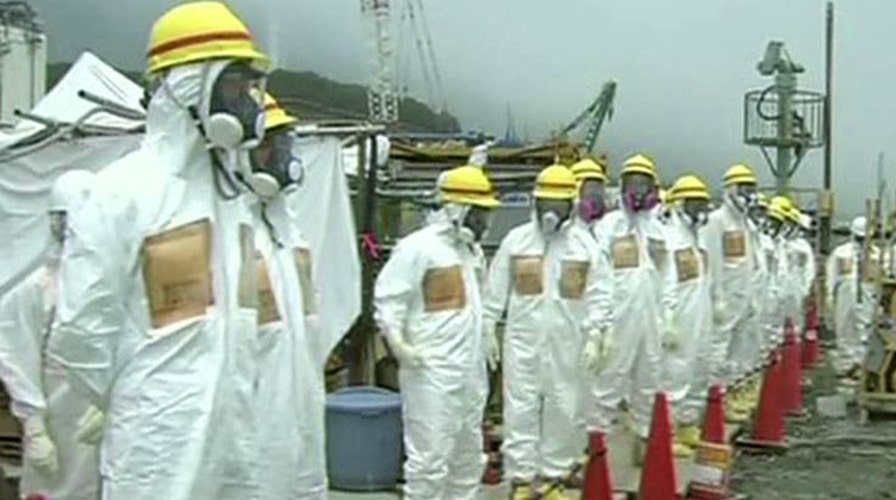Japanese nuclear plant still leaking contaminated water
David Piper reports from Bangkok, Thailand
TOKYO – Japan's government said Wednesday that it will step in and take "firm measures" to combat leaks of radioactive water at the country's crippled nuclear plant, including possibly funding a multibillion-dollar project to fix the problem.
The announcement came a day after the operator of the wrecked Fukushima Dai-ichi plant said some of the water was seeping over or around an underground barrier it created by injecting chemicals into the soil that solidified into a wall.
"There is heightened concern among the public, particularly about the contaminated water problem," Prime Minister Shinzo Abe said Wednesday during a government nuclear disaster response meeting at his office. "This is an urgent matter that needs to be addressed. The government will step in to take firm measures."
The latest problem involves underground water that has built up over the last month since the operator, Tokyo Electric Power Co., began creating the chemical walls underground to stop leaks after detecting radiation spikes in water samples in May.
Government officials said Wednesday that an estimated 300 tons of radioactive water has been leaking into the sea each day since early in the crisis, which was caused by a massive 2011 earthquake and tsunami.
Since a major leak occurred from a maintenance pit a month after three reactors at the plant melted following the disasters, TEPCO had denied any further leaks of radioactive water into the sea, despite repeated warnings by experts, until finally acknowledging them last month.
The underground barrier on the coastal embankment has slowed the leaks somewhat, but has caused underground water to swell at the complex. To prevent an overflow above the surface, which is feared to happen within weeks, TEPCO will start pumping out about 100 tons of underground water from coastal observation wells by the end of this week. Later this month, TEPCO is to remove old contaminated water from trenches near the coast -- a time bomb that it had left untouched despite repeated prodding from government watchdog officials.
Shinji Kinjo, an official at the Nuclear Regulation Authority, said faster-than-expected swelling of the underground water following the installation of the chemical barriers accelerated the emergency caused by TEPCO's delays.
Alarmed by the leaks, a fisheries cooperative in nearby Iwaki city decided to indefinitely postpone a test catch planned for September.
Government officials said Wednesday that they were considering funding a separate, multibillion-dollar project to surround the reactor buildings with a wall of frozen ground to block underground water from entering the contaminated buildings. The project, announced in May, is scheduled for completion in July 2015.
Similar methods have been used to build tunnels, but building a wall that surrounds four reactor buildings and their related facilities is "unprecedented anywhere in the world," said Chief Cabinet Secretary Yoshihide Suga. "We believe it is necessary that the country steps forward to support its construction," he said.
Tatsuya Shinkawa, an official at the Agency for Natural Resources and Energy, said government officials were discussing funding details for the frozen ground wall project, which is expected to cost several tens of billions of yen (hundreds of millions of dollars).
That would be in addition to a 8.7 billion yen ($90 million) budget this year for decommissioning projects including development of robots to locate and remove debris from the melted reactors.
The plant is also constructing an offshore wall of steel panels along the coast to keep contaminants from spreading further into the sea. TEPCO says radioactive elements have mostly remained near the embankment inside the bay, but experts have reported offshore "hot spots" of sediments contaminated with high levels of cesium.

